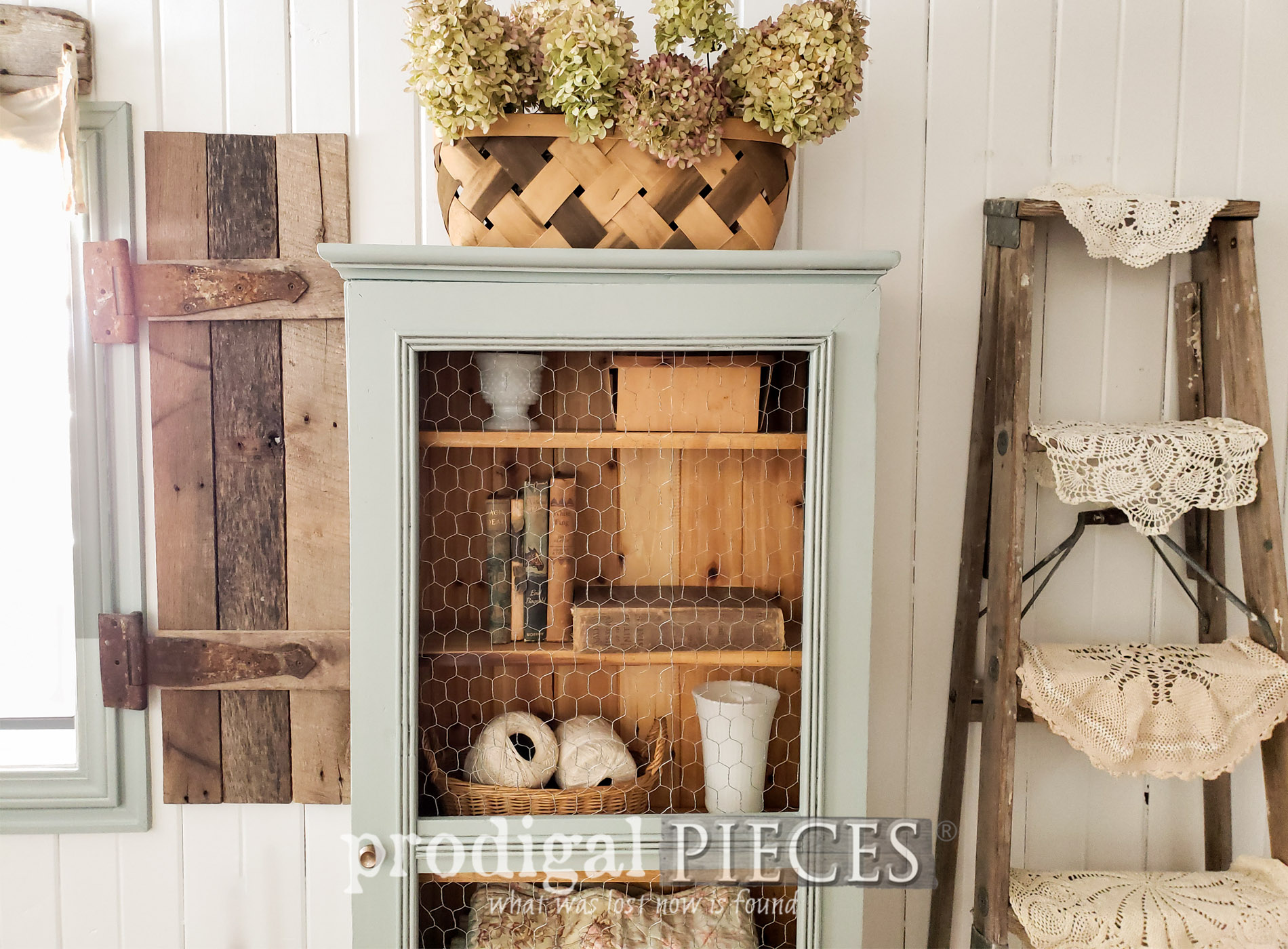Types and Styles of Vintage Wood Gun Cabinets

Vintage wood gun cabinets are not just storage solutions; they are pieces of furniture that reflect the tastes and craftsmanship of their era. These cabinets offer a glimpse into the past, showcasing the artistry and practicality of bygone days. They come in a wide range of styles, each with its own unique characteristics and appeal.
Popular Vintage Wood Gun Cabinet Styles
Vintage wood gun cabinets can be broadly categorized into different styles based on their design elements, materials, and historical context. These styles often reflect the prevailing architectural and decorative trends of their time.
- Arts and Crafts: This style, popular in the late 19th and early 20th centuries, emphasized simplicity, functionality, and natural materials. Arts and Crafts gun cabinets often feature handcrafted details, such as hand-cut joinery, exposed wood grains, and simple, geometric designs. They are typically made from sturdy hardwoods like oak, cherry, or walnut.
- Mission Revival: Inspired by the architecture of Spanish missions in California, Mission Revival gun cabinets feature a distinctive, robust aesthetic. They often have a dark, rich finish and incorporate elements like heavy, square-shaped doors, exposed hardware, and simple, geometric motifs. Mission Revival cabinets are usually made from hardwoods like oak or redwood.
- Victorian: Victorian-era gun cabinets reflect the ornate and elaborate style of the late 19th century. They often feature intricate carvings, elaborate moldings, and decorative hardware. Victorian gun cabinets can be made from a variety of hardwoods, including mahogany, walnut, and cherry.
- Colonial Revival: This style, popular in the early 20th century, drew inspiration from the architecture of colonial America. Colonial Revival gun cabinets often feature simple, clean lines, traditional hardware, and a warm, rustic finish. They are typically made from hardwoods like cherry, walnut, or maple.
- Art Deco: This style, popular in the 1920s and 1930s, emphasized geometric patterns, bold colors, and luxurious materials. Art Deco gun cabinets often feature sleek, streamlined designs, geometric inlays, and metallic accents. They are typically made from hardwoods like walnut, mahogany, or rosewood.
Vintage Wood Gun Cabinet Characteristics
The characteristics of vintage wood gun cabinets can vary significantly depending on their style, era, and origin. Here’s a table highlighting some defining features of popular styles:
| Style | Defining Characteristics | Materials | Typical Features |
|---|---|---|---|
| Arts and Crafts | Simple, functional design, handcrafted details, exposed wood grains, geometric motifs | Oak, cherry, walnut | Hand-cut joinery, simple hardware, stained or oiled finish |
| Mission Revival | Robust, heavy aesthetic, dark finish, square-shaped doors, exposed hardware | Oak, redwood | Geometric motifs, simple carvings, thick, sturdy construction |
| Victorian | Ornate, elaborate design, intricate carvings, decorative hardware | Mahogany, walnut, cherry | Elaborate moldings, decorative accents, polished finish |
| Colonial Revival | Simple, clean lines, traditional hardware, warm, rustic finish | Cherry, walnut, maple | Traditional joinery, simple carvings, painted or stained finish |
| Art Deco | Geometric patterns, bold colors, luxurious materials, sleek, streamlined designs | Walnut, mahogany, rosewood | Geometric inlays, metallic accents, polished finish |
Caring for and Restoring Vintage Wood Gun Cabinets

Vintage wood gun cabinets, often crafted with exquisite detail and enduring materials, are not just storage solutions but also cherished heirlooms. Preserving their beauty and functionality requires careful attention and understanding. This section delves into the essential techniques for maintaining and restoring these timeless pieces, ensuring they remain a source of pride for generations to come.
Cleaning and Maintenance
Regular cleaning is crucial for preserving the condition of a vintage wood gun cabinet. Dust accumulation can dull the finish and attract pests, while spills can damage the wood.
- Use a soft, lint-free cloth to dust the cabinet regularly. Avoid abrasive materials that can scratch the surface.
- For deeper cleaning, mix a mild solution of dish soap and warm water. Apply the solution to the cloth and wipe down the cabinet, avoiding excessive moisture.
- Dry the cabinet thoroughly with a clean cloth to prevent water damage.
- Apply a wood polish or furniture wax periodically to protect the finish and enhance its shine. Choose a product specifically designed for antique furniture.
Addressing Common Issues
Over time, vintage wood gun cabinets may develop minor imperfections like scratches, dents, and faded finishes. Addressing these issues can restore their beauty and value.
Scratches
- For shallow scratches, apply a touch-up pen or marker that matches the cabinet’s finish. This method effectively conceals minor imperfections.
- For deeper scratches, consider using a wood filler. Choose a filler that matches the wood’s color and grain. Apply the filler to the scratch and allow it to dry completely. Sand the filler smooth with fine-grit sandpaper and apply a matching wood stain or finish.
Dents
- For minor dents, try using a damp cloth and a hairdryer to apply heat to the area. The heat can sometimes cause the wood to expand and push out the dent. This method is most effective on soft woods.
- For deeper dents, consider using a wood filler. Choose a filler that matches the wood’s color and grain. Apply the filler to the dent and allow it to dry completely. Sand the filler smooth with fine-grit sandpaper and apply a matching wood stain or finish.
Faded Finishes
- For faded finishes, consider applying a wood polish or furniture wax to revitalize the color and shine. Choose a product specifically designed for antique furniture.
- If the finish is severely faded, you may need to refinish the cabinet. This involves stripping the old finish, sanding the wood, and applying a new finish. It is recommended to consult a professional for this process.
Restoring a Vintage Wood Gun Cabinet
Restoring a vintage wood gun cabinet to its original glory can be a rewarding project, requiring patience and attention to detail. The process involves several steps, including:
- Disassembly: Carefully disassemble the cabinet, removing drawers, shelves, and hardware. This allows for easier access to all surfaces for cleaning and restoration.
- Cleaning: Thoroughly clean all surfaces of the cabinet, removing dust, dirt, and grime. Use a mild soap solution and a soft cloth to avoid damaging the wood.
- Stripping: If the finish is severely damaged or faded, it may need to be stripped. Use a chemical stripper specifically designed for wood furniture. Apply the stripper according to the manufacturer’s instructions, ensuring proper ventilation. After stripping, thoroughly clean the wood to remove any residue.
- Sanding: Sand the wood surfaces to remove any remaining old finish and smooth out imperfections. Start with a coarse-grit sandpaper and gradually progress to finer grits for a smooth finish. Sand with the grain of the wood to avoid creating scratches.
- Repairing: Fill any cracks, dents, or holes with wood filler. Choose a filler that matches the wood’s color and grain. Apply the filler according to the manufacturer’s instructions and allow it to dry completely. Sand the filler smooth with fine-grit sandpaper.
- Staining: If desired, apply a wood stain to enhance the color and grain of the wood. Choose a stain that matches the original finish or creates a desired effect. Apply the stain according to the manufacturer’s instructions, ensuring even coverage.
- Finishing: Apply a protective finish to the cabinet, such as varnish, polyurethane, or shellac. Choose a finish that matches the original finish or creates a desired effect. Apply the finish in thin coats, allowing each coat to dry completely before applying the next.
- Reassembly: Once the finish is dry, reassemble the cabinet, replacing drawers, shelves, and hardware. Ensure that all hardware is properly secured and functioning correctly.
Okay, so you’ve got this awesome vintage wood gun cabinet, right? But maybe it’s a little… imposing for your bedroom? Well, check out this ikea bedroom bench hack for some inspiration! You could totally repurpose that cabinet into a stylish storage bench, maybe even with a plush cushion on top.
Just imagine, your guests will be wondering if you’re hiding a secret stash of weaponry or just a comfy place to sit. The possibilities are endless, just like the number of bullets your cabinet could hold… (kidding, kidding!).
You know, I always thought vintage wood gun cabinets were a bit intimidating, like they were whispering secrets about past hunts. But then I saw a solid wood apothecary cabinet and realized, hey, maybe it’s just the wood that’s got me mesmerized! After all, a good vintage wood gun cabinet is all about that classic, rugged charm, just like those apothecary cabinets with their intricate carvings and hidden compartments.
Maybe I’ll just build a secret room in my basement and fill it with both!